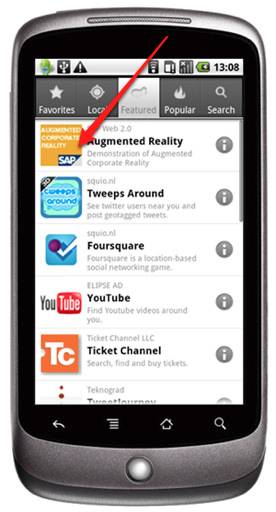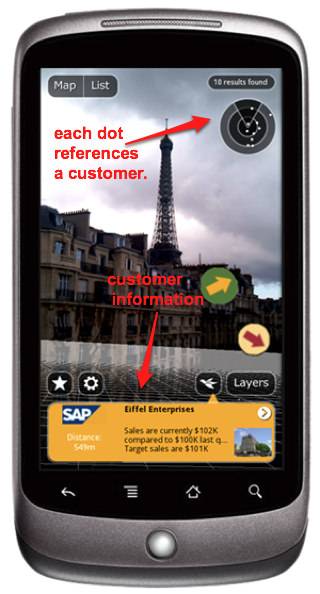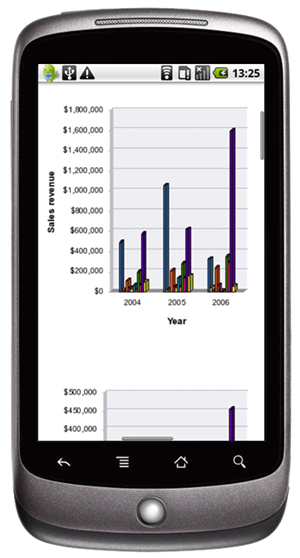SAP is experimenting with augmented reality to show it can be used with its business applications.

On the SAP Web 2.0 blog, Timo Elliott calls it “Augmented Corporate Reality.” The AR application is so far is only a concept, but it clearly demonstrates how SAP Business Objects could fit with Layar, an augmented reality browser. For those new to the AR world, Layar is installed on a smartphone. You point the camera at an object or location. Information is layered on top of the real-world image you see on the screen, based on what the smartphone camera is capturing.
In Elliott’s case, he illustrated how SAP Business Objects would be used with an augmented reality application using the Layar API.

The application works like any data that is integrated with Layar. Elliott opened up his Google Nexus One and activated the camera. Layar connected to SAP Business Objects to find the businesses closest to the location. SAP Business Objects is a business intelligence platform used by large enterprises.
The Business Objects information shows a company’s sales performance. The direction of the arrow shows how it’s trending. According to the blog, the color indicates whether or not sales have reached a target goal. The size of the icon gives the approximate distance of the office.

The application can show a map view. It also provides detailed information about the company, including charts.

The potential for applications for augmented reality in the enterprise are vast. Applications can be integrated to add additional data about what is being viewed. They can be used to view any kind of information, from a bank to a factory.
Elliott makes the point that it is only restricted by the location service.
“Realistically, it works well for identifying building locations outdoors using GPS, but is not yet precise enough for most indoor use. However, this is changing fast as vendors offer new location services, based on cell-phone, wifi, and other forms of signal triangulation.”
But how far will this go?










